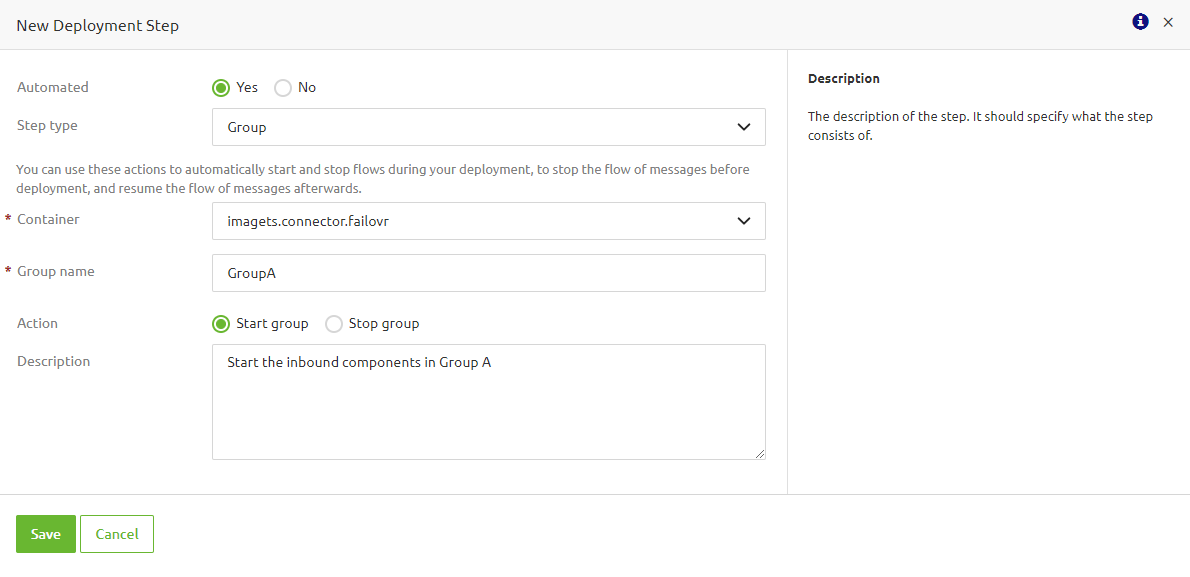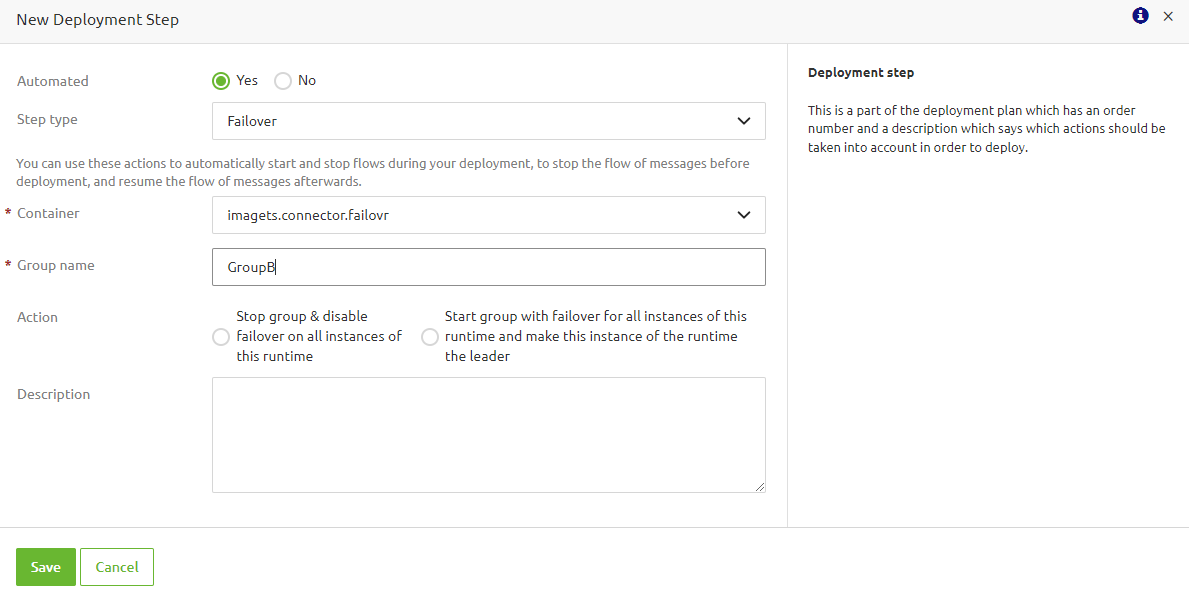Deploy Possibilities
eMagiz flows, or more specifically, the flow's inbound component(s), can be grouped. How to configure this is explained here. This functionality is mainly beneficial when faced with substantial maintenance or outage of systems connected to your eMagiz model.
Building on this functionality, you can even configure the group to run in an active/passive failover mode when you activate the multiple runtimes option on your runtime, and each separate runtime is deployed on another machine. The failover functionality is not only relevant in cases of server maintenance. It can also assist you when you want to exchange data with a system that allows only one active connection. Should this connection be business-critical, you can use this failover functionality to create a passive failover situation that will take over when the active connection breaks down (regardless of the reason).
In this microlearning, we will focus on configuring the deployment plan to control various inbound compoments in a normal and in a failover configuration.
Should you have any questions, please get in touch with academy@emagiz.com.
1. Prerequisites
- Intermediate knowledge of the eMagiz platform
2. Key concepts
This microlearning describes how to configure (parts of) your deployment plan to set up the grouping and, if needed, the failover functionality. The grouping functionality is relevant when faced with maintenance and outages of systems connected to your model. The failover functionality assists in that case and allows you to have a fallback option on an active connection.
3. Group Deployment Step
To configure a Group deployment step, you need to add a new deployment step and choose Step type "Group". To configure the step more information is required. A container should be chosen for which the inbounds will be stopped. The second requirement is the exact name of the group that should be affected by the deployment step. An action should be picked for the selected group. For a "Group" deployment step the options are to start or to stop the inbound components within the groupname. Optionally, a description can be added.

4. Failover Deployment Step
The configuration for a failover deployment step is the same as for the group deployment step. The only difference is the action you can activate. The stop group action makes the inbounds of the selected container stop. On top of that it will disable the failover, so if there is a follower configured it will not take over. Instead, from this point were are running in a dubble setup in which we have single node leaders.

The start group step with failover will activate the current container as the leader of the failover setup. Therefore, resembling group names on other containers will become the followers. If these flows were running, they will be stopped.

5. Key takeaways
- Grouping is beneficial when external systems go through maintenance or downtime.
- Failover can have the additional benefit of having a fallback scenario while still adhering to the requirement that there can only be one active connection at a time
- The role naming in both grouping and failover is crucial. The group name needs to match exactly to make it work.
- You can control group and failover steps from the deployment plan
6. Suggested Additional Readings
There are no suggested additional readings for this microlearning.
